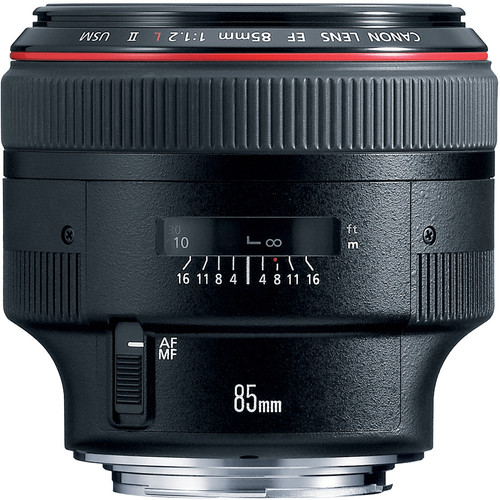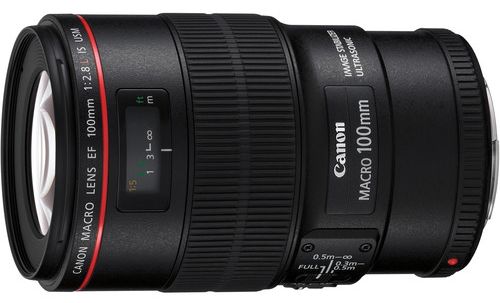When it comes to headshot photography, choosing the right focal length can make all the difference in achieving flattering and professional results. The focal length of your lens impacts everything from the overall composition to how facial features are rendered, making it crucial to understand how each option affects your final image. In this article, we’ll explore the best lenses for headshot photography as well as the best focal lengths for headshot photography.
The Best Focal Length for Headshot Photography
Let’s start by discussing the best focal length for headshot photography. When we go to wide, we introduce unflattering distortion to our subject’s face and when we go too long we get too far from our subject and lose the intimacy that can open our subjects up for authentic expression.
When the Focal Length is Too Wide
Of our favorite lenses, the least ideal is a 24-70mm. However, it’s a lens that many people who are established but are branching into headshot photography may already own. We would only recommend shooting headshots at the 70mm focal length of this lens, and even that is pushing it as far as distortion goes. If you were to shoot a headshot at 24mm close enough to fill the frame with the subject, you would be creating a bobble-headed caricature that is unlikely to be how you client wants to be represented.
Shooting at too wide of a focal length exaggerates any asymmetry in the subject’s face, significantly enlarges what is closest to the lens while reducing what is farthest, and exaggerates the distance between objects in the frame. This could be the distance between your subject’s neck and chin, for example – awkward.

If we zoom all the way out to 70mm, the image’s look will be much improved, but it’s still not giving us quite the look that we want for our headshot photography. To counteract this and work with what you’ve got if a 24-70mm is the lens that you own that’s best suited to headshot photography, we can step back a little and give the subject some headroom in the frame which we will crop into in post.
When the Focal Length is Just Right
Our other two favorite headshot lenses are telephoto primes – an 85mm and a 100mm Macro. These are ideal focal lengths for a headshot because they do not have the distortion issues inherent in a 24-70mm at a distance where we can fill the frame with our subject.

When the Focal Length is Too Long
If longer is better, is longest best? Not always.
The choice not to use an even longer telephoto focal length is less an aesthetic decision and more of a practicality of function. The longer the focal length, the further we must go from our subject to keep our desired framing. There are two potential issues with this with a headshot shoot. If shooting indoors, you only have so much space, and unless you’re lucky enough to be able to shoot in a large space, you may just find yourself literally up against a wall with nowhere left to go.
What’s more, when we back too far away from our subject we reduce communication. It becomes more difficult to interact with them which can be a confusing experience for a subject and certainly not what you would want to do to a paying client. Being too far from the client can create an awkward disconnect that makes it harder to pull out those elusive expressions that it’s our job to entice and capture, as fleeting as they are.
Our Recommendation

So, you can see that the role focal length plays in headshot photography is both tied to the subject’s physical appearance in photos and the overall client experience in-studio. We want to give our clients a great experience while we work with them and deliver flattering images, and for this reason, we recommend using a lens with a focal length in the 70mm-100mm range, preferably 85mm-100mm. If you’ve got a 70-200mm lens you can get optically great results, just be mindful of how far you are getting from your subject.
The Best Lenses for Headshot Photography
With the best focal lengths in mind, here are some of our favorite lenses for headshot photography. Each camera maker should have an equivalent or equivalent lens.
The 85mm f/1.2L
This is the classic portrait focal length, and for good reason. It’s not going to distort your subject, places you a comfortable distance from them as you shoot (neither too far nor too close,) and is super sharp.
For bokeh enthusiasts, this lens offers a super shallow depth of field, but in the studio with strobe, it’s actually overkill. Even at their lowest setting, most strobes will be too bright to shoot at f/1.2 without overexposing. For this reason (even though it’s nice to have the fanciest and most expensive stuff when you can), you would be no worse for wear with an 85mm f/1.8 which costs a fraction of the cost and still offers basically all of the benefits in a studio environment.
A Few Options:
The 100mm f/2.8 Macro
This is another great focal length for portraits, and this lens is as sharp as a tack. It’s a little longer than 85mm, but not so long that you will be a mile from your subject with your back against a wall on the other side of the studio yelling directions.
In the Canon realm, there is an L and a non-L version and you can’t go wrong with either. Outside of the studio, you may find yourself missing the wider aperture available on the 85mm, but in the studio, you’ll be just fine with this lens. Plus, it has the bonus of being a really great detail lens if you also shoot weddings or other occasions that require close-ups. I’ve even used it for product shots with great results.
Alternatives:
The 28-70mm f/2.0

While not quite as ideal as a headshot specific lens, this is a phenomenal piece of glass that is hugely versatile and will give you top-notch quality. There’s not really much getting around the cost of this one for a first party lens – there are third party options that will cut down on the expense but it’s still not going to be cheap. That said, 24-70mm is an incredibly useful range to have. For headshots, you would be using the long end – 70mm.
Since this is a fair bit shorter than our next shortest focal length, it will cause a little bit of distortion. To counteract this, pull back a little and leave room around your subject to crop. You’ll lose a little resolution this way, but most modern cameras have ample megapixels for this without harming anything for this purpose.
Options:
- Canon RF 28 70 f/2
- Nikon 24-70mm Lenses
- Sony 24-70mm Lenses
- Sigma 24-70mm Lenses
- Tamron 24-70mm Lenses
If you’re just getting started in headshot photography, any of these lenses would be a great first addition to your kit to capture portraits.
What is your favorite lens to use for headshot photography? Let us know in the comments, and show us your work in our Facebook community! For more content like this and in more detail with video demonstration, be sure to check out our Headshot Photography 101 workshop and if you’d like access to our full collection of Premium workshops, become a subscriber!














